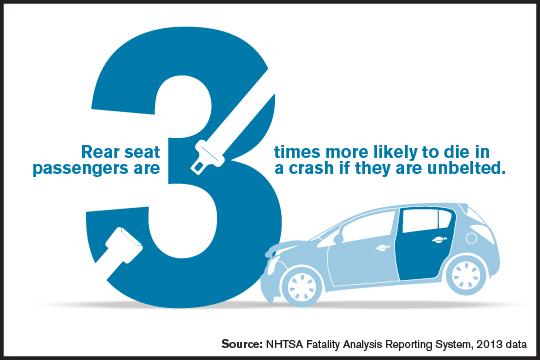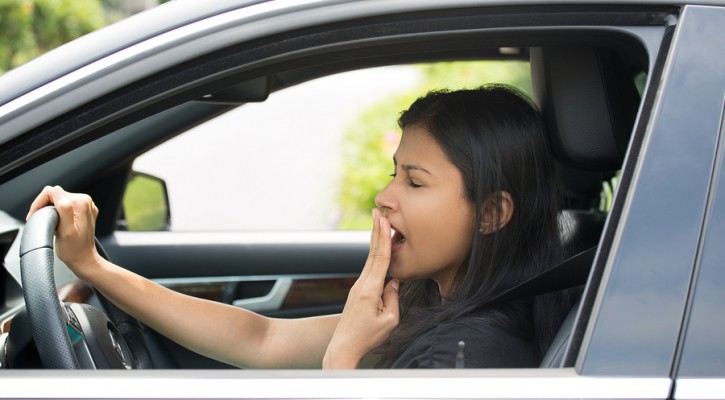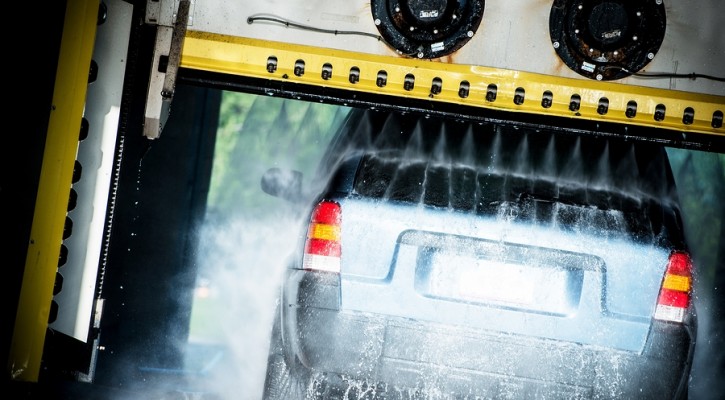Category Archive: Uncategorized

Night Shift Workers At High Risk Driving Home
December 29, 2015
Night shift workers are at greater risk of a crash when driving home from work than day shift workers according to new research conducted by Brigham and Women’s (B&W) Hospital in Boston. The study’s results were published this month in the Proceedings of the National Academy of Sciences.
It has long been known that shift workers, especially those whose shifts rotate between day and night are at greater risk for health problems, including heart attacks. The researchers at B&W felt that night shift workers might suffer a greater risk of involvement in a motor vehicle crash because, no matter how long they had worked the night shift, their natural circadian rhythms were disrupted, preventing them from getting adequate sleep.
Driving drowsy is a major problem among American drivers. According to an American Automobile Association (AAA) study published last year, approximately 6,400 people are killed in 328,000 crashes per year due to drowsy driving. According to the AAA study, drowsy driving was responsible for 21 percent of crashes in which a person was killed and 13 percent of crashes in which a person was hospitalized.
To conduct the research, the researchers recruited night shift workers to drive over a two hour period during daytime immediately following their night shift. The same workers were tested again after getting an adequate night’s sleep. The tests were conducted on a closed test track at the Liberty Mutual Research Institute for Safety.
- During the tests conducted after a night shift, track safety observers had to step in and use emergency braking procedures to prevent a crash in 37.5 percent or one-third of the test drives.
- In 43.8 percent of the test drives, safety observers had to halt the drive prematurely because the test subjects were too sleepy to maintain adequate control of their vehicle.
- Episodes of microsleep (nodding off for three or more seconds) increased with each half hour of the drive.
- Instead of making multiple small-scale steering corrections, subjects made infrequent large-scale steering maneuvers to avoid crossing over into other lanes.
- When tests were conducted after subjects had slept all night, there were no emergency braking interventions or test terminations by the safety observers.
Most of the near crashes and inability to maintain control happened after more than 45 minutes into the two hour drive. The researchers realized that that was a long time but noted that many night shift workers routinely commute more than an hour each way to and from work.
The researchers felt that the safest way to resolve the problem is for employers to provide transportation from the workplace to a central area where night shift workers can get public transportation for the remainder of the trip home.
Read more: High drowsy driving crash risk on daytime commute after night work

Rear Seat Adult Passengers Fail To Use Seat Belts
November 23, 2015
In February of this year, 60 Minutes correspondent and CBS newsman Bob Simon, was riding as a rear seat passenger in a livery cab when it was involved in a crash. Simon, who wasn’t wearing a seat belt, received massive head and torso injuries and died shortly after being taken to a hospital.
The Governors Highway Safety Administration (GHSA) says that too many adults riding in the rear seat fail to wear a seat belt and almost half of those who were killed in crashes could have survived had they been wearing a seat belt. According to a report by the GHSA, in 2013, 883 unrestrained rear seat passengers age eight and older were killed in crashes. The GHSA estimates that more than 400 of them would have survived if they had been wearing a seat belt.
The GHSA report places a lot of the blame for the lack of seat belt use among rear seat passengers on the states for failing to pass strict seat belt laws that require all occupants of a motor vehicle to use seat belts; no matter where they are seated. Only sixteen states and the District of Columbia currently have primary seat belt laws that require everyone in the vehicle in both the front and rear seat to be buckled up at all times. Ten states have secondary laws requiring rear seat seat belt use but those laws can only be enforced if the driver is stopped for another “primary” traffic offense. Some states have a mix of primary front seat and secondary rear seat laws. Twenty-two states, including Florida, have no laws at all requiring the use of seat belts by adults in the rear seat.
Among the states with stricter rear seat seat belt laws, seat belts are used by approximately 83 percent of adults in the rear seat while in states with no rear seat laws, only 74 percent of adults use seat belts. There is a direct correlation between state seat belt laws and use of seat belts by adults in the rear seat.
Even if they have primary seat belt laws for all seating positions, some states, including New York, don’t require rear seat passengers in taxis or cars-for-hire to wear seat belts. In the case of Bob Simon, he wasn’t required by law to wear a seat belt but many feel he would have survived the crash if he had been wearing one.
Adults who don’t use seat belts in the rear seat often aren’t the only ones killed or injured in a crash. Even those in the front seat who are using seat belts can be killed in a crash when they’re struck by the rear seat adult’s body as it flies forward and bounces around the interior of the vehicle.
The GHSA calls on states to enact strict, primary seat belt laws requiring all passengers, including those in the rear seat to wear a seat belt at all times. Even if your state doesn’t require the use of seat belts by adults in the rear seat, it’s always a good idea to wear one. Seat belts save lives.
Read more: http://www.ghsa.org/html/publications/spotlight/rearbelts2015.html

Hidden Sleep Disorders Can Be Dangerous
August 24, 2015
A new Institute of Medicine report points out the health and safety dangers posed by undetected sleep disorders. According to medical experts, hidden sleep disorders can lead to cardiovascular problems, diabetes, and possibly Alzheimer’s. Especially dangerous are the dangers of industrial accidents and motor vehicle crashes caused by drowsy driving.
Many people in their 50’s to 60’s could be suffering from one or more of these hidden sleep disorders and simply attribute their sleepiness to advancing age. Individuals with sleep disorders may also be in denial because they don’t have any of the risk factors such as alcohol use or smoking.
While driving, lack of sleep can lead to a lack of concentration on the road ahead. In many cases, drowsy driving can cause what is known as a micro-sleep, where the driver nods off for a second or two. A second or two may not seem too bad until you consider that, at highway speeds, a car can travel almost 200 feet in two seconds. A second or two is long enough to drive into another lane or off the road.
A 2014 study by AAA found that drowsy driving was responsible for 21 percent of fatal crashes and the deaths of an average of 6,400 people per year.
Without any obvious symptoms reported by the individuals or spouses, the only way to diagnose these hidden sleep disorders is through a sleep study in a specially designed sleep lab. In these labs, subjects spend the night in a soundproof, totally dark room while their brainwaves, respiration and other signs are monitored by staff in a central control room.
If an obstructive airway is diagnosed as the cause of these sleep disorders, a Continuous Positive Airway Pressure (CPAP) machine is often prescribed. However, many don’t like the idea of sleeping while wearing a mask and hooked by hoses to a noisy machine. For those who resist that idea, there are alternatives such as surgery to open up the airway or an appliance worn inside the mouth that pushes the lower jaw forward.
For others sleep therapy can be as simple as changing lifestyle habits such as watching alcohol intake, staying up too late, or watching TV in the bedroom.
Doctors advise that, if you feel sleepy during your normal wake hours on a regular basis, you may be suffering from one or more of these sleep disorders. The study’s authors advised medical practitioners to consider lack of sleep and question their patients on their sleep habits as part of their routine diagnostic process.
Read more: Snooze Alert: A Sleep Disorder May Be Harming Your Body And Brain

Wash The Underbody Of Your Vehicle: NHTSA
April 16, 2015
Wash the underbody of your vehicle is the common sense advisory the National Highway Transportation Safety Administration (NHTSA) gave in closing out a recall investigation of corroded brake lines on older model GM vehicles.
The NHTSA investigation began in 2011 after receiving multiple reports of brake line failures in GM cars and trucks. After a four year investigation of vehicles manufactured between 1999 and 2003, NHTSA concluded that the corrosion of brake lines were mostly limited to those states that use salt or other corrosive chemicals for snow removal on the roads. Their investigation revealed that the brake line corrosion problem wasn’t unique to GM vehicles and occurred at about the same rate as those that occurred in vehicles built by other manufacturers. According to NHTSA, the brake line corrosion problem was due to salt and other corrosive snow removal chemicals that accumulated on the underbody of vehicles and didn’t indicate a manufacturing problem that would require a recall.
Instead of issuing a recall, NHTSA advised all drivers, especially those who live or drive in states where salt and other snow removal chemicals are regularly used, to thoroughly wash the underbody of their vehicles and keep the underbody clean during the spring and summer.
NHTSA also advised vehicle owners, especially those who drive vehicles manufactured in 2007 or earlier, to have the brake lines inspected on a regular basis and replace lines that show evidence of heavy corrosion. They also advised that owners have their brake lines inspected if they experience loss of brake fluid, unusual leaks, or spongy brakes.
If your brakes should fail, NHTSA advises drivers to apply steady force to the brakes and reminds drivers with anti-lock brakes to never pump the brakes.
Read more: NHTSA Closes Investigation into Brake-Line Failures
Tornado On The Road
April 15, 2015
If you encounter a tornado on the road, what should you do? The driver in the video above was faced with this situation and he had no idea what he should do to escape the force of the tornado. According to the experts, he made one mistake but he also did the correct thing.
We’re in the height of tornado season and, while most tornados at this time of year occur in the plains states, tornadoes can form anywhere there are thunderstorms. Thanks to a 1991 video by a Kansas TV crew, a lot of people think that a highway overpass is the safest place to seek shelter from a storm but weather experts say that an overpass can be the most dangerous place of all to seek shelter. There are several reasons for that:
- The structure of the overpass can channel the winds into a wind tunnel effect and make them even stronger.
- Flying debris, traveling at up to 200 mph, can be channeled up into the narrower parts of the overpass and can do as much damage as a bullet. In the Kansas TV video, you can see debris being sucked up toward the area where the people are hiding.
- The wind under the overpass can change as much as 180 degrees.
- There are no handholds to cling to as the storm passes.
It turns out that the Kansas film crew was just extremely lucky that the tornado wasn’t that strong.
So what should you do if you encounter a tornado on the road? Weather experts offer the following advice:
- Do not seek shelter under an overpass.
- If there’s time, pull off the road and seek shelter in a strong building. Remain in the lowest part of the building in a windowless room or hallway if possible.
- If you can’t get to a building, seek an area such as a culvert or ditch below the level of the roadway; Cover your head with your hands.
- If there is nowhere to escape, remain in your vehicle with your seat belt fastened; lay down below window level and cover your head with a coat or blanket, if possible.
The man in the video above made a mistake by backing up under the overpass but he made the right choice by remaining inside his vehicle and laying down below the window level. He was very fortunate.
Remember, just because the funnel cloud has passed, you aren’t out of danger yet. Straight line winds that flow outside the area of the funnel cloud can do more damage than the funnel cloud itself. Another video from the recent tornado in Illinois shows a semi toppling over well after the funnel cloud had passed.
For more information on storm safety and how to deal with a tornado on the road, read: Thunderstorms, Tornadoes, Lightning…Nature’s Most Violent Storms
